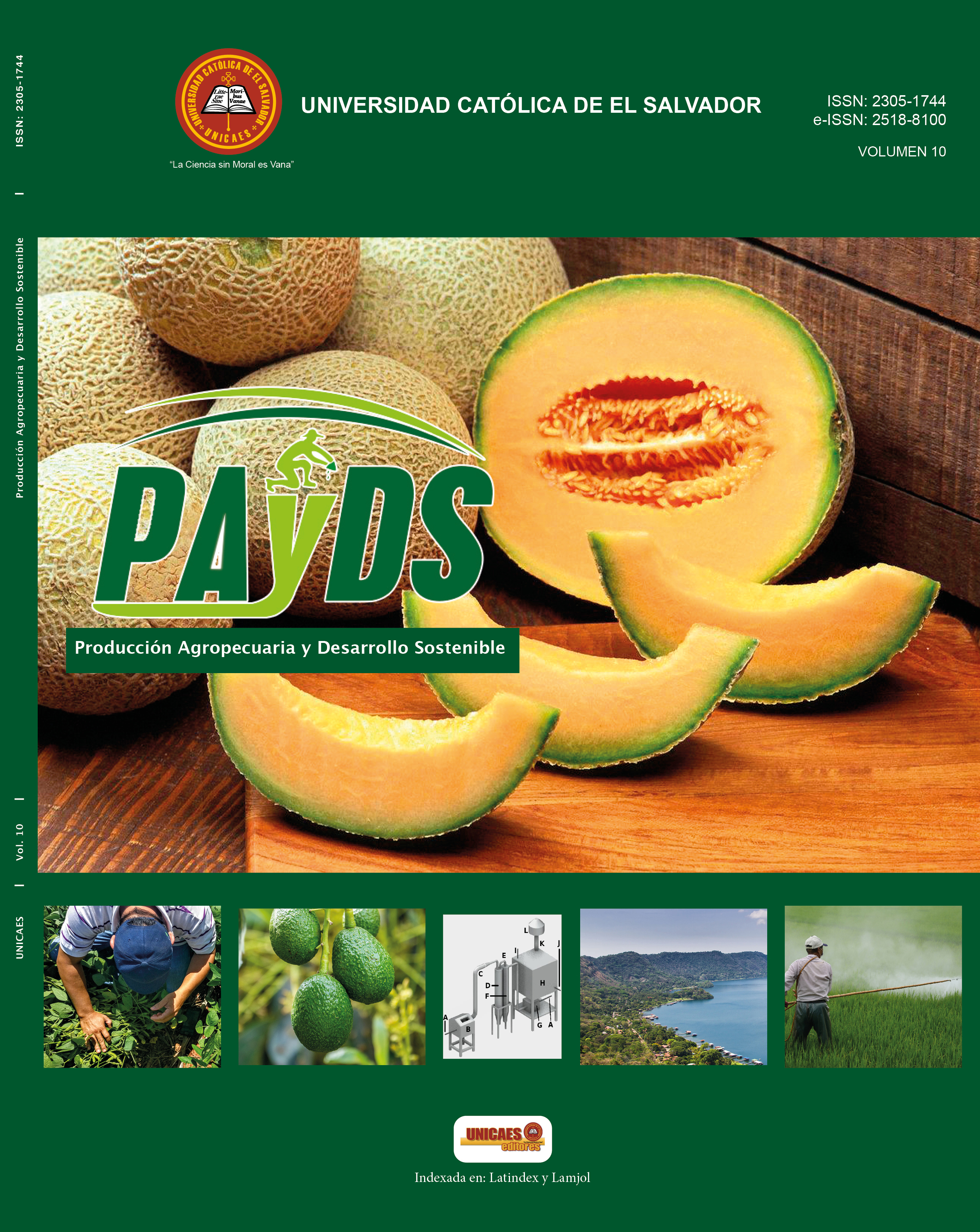Diseño de planta de tratamiento de aguas residuales restaurante Tekunal en el lago de Coatepeque, Santa Ana
DOI:
https://doi.org/10.5377/payds.v10i1.13348Palabras clave:
Recurso hídrico, aguas residuales, generación de vertidos, diseño de tren de tratamiento de aguas residualesResumen
El artículo representa un aporte que constituye una mejora a la problemática ambiental, en uno de los ámbitos más importantes actuales como es la conservación del recurso hídrico, el cual es uno de los recursos más afectados por acciones humanas e industriales. El estudio realiza una propuesta de diseño de una planta de tratamiento de aguas residuales para el restaurante Tekunal, ubicado en lago de Coatepeque, entre los municipios de Santa Ana y El Congo, en el departamento de Santa Ana en El Salvador.
Se llevó a cabo un muestreo de parámetros fisicoquímico y biológico de las aguas producidas en el restaurante, así como una revisión de las instalaciones del lugar, mediante la cual se pudo determinar que no existían las condiciones necesarias para el tratamiento de las aguas. Con los resultados de laboratorio, se procedió a seleccionar el tratamiento adecuado según la capacidad de clientes, disposición de recursos y terreno con los que cuenta dicho restaurante. Además, se elaboró una memoria de cálculo y el diagrama del tren de tratamiento, el cual contará con tratamiento preliminar, primario, secundario y terciario; brindando como la mejor opción el tratamiento anaerobio combinado con el humedal, y la gestión de lodos por parte de una empresa externa,
para no afectar e incomodar a los usuarios del restaurante con posibles malos olores.
Descargas
930
Descargas
Publicado
Cómo citar
Número
Sección
Licencia

Esta obra está bajo una licencia internacional Creative Commons Atribución-NoComercial 4.0.
© Producción Agropecuaria y Desarrollo Sostenible
El copyright de los artículos se transfiere a la revista Producción Agropecuaria y Desarrollo Sostenible.
Como usuario de esta revista, usted posee:
● Acceso abierto para consultar la información contenida en este número
● Permiso para copiar, distribuir, mostrar, realizar o combinar las prácticas anteriores, en cuanto al uso de la información, siempre y cuando esta sea estrictamente sin fines de lucro.
Este revista utiliza una licencia CC BY-NC

Este obra está bajo una licencia de Creative Commons Reconocimiento-NoComercial 4.0 Internacional




